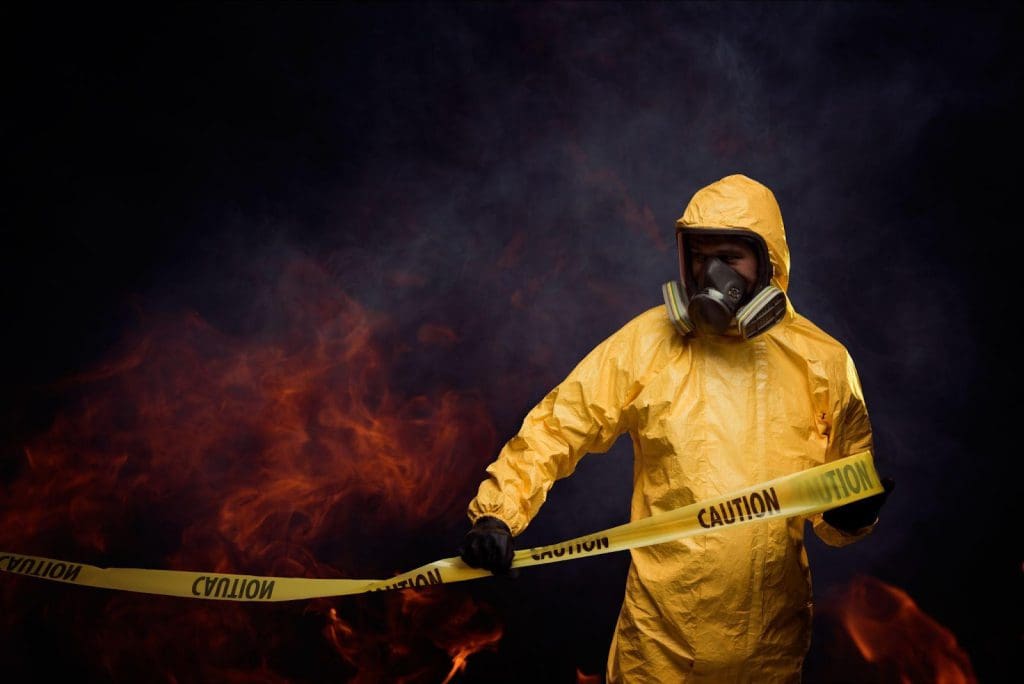
The National Chemical Emergency Centre (NCEC), together with the UK government, has developed a code of practice for responding to chemical emergencies that pose harm to people and the environment. The crux of this framework is the Emergency Action Code—a short and simple directive of how to contain a chemical spill or emergency.
The Dangerous Goods Emergency Action Code (EAC) List published by the NCEC contains a guide to deriving and interpreting EACs, as well as a complete list of registered dangerous goods from UN number 1001 to 3549. This list includes the substance name, EAC, hazard classification (and sub-risks, if applicable), advice on additional personal protection, and hazard identification number. This list is updated every two years.
A regulation Hazard Warning Panel in the United Kingdom will contain the following features: a 4-digit UN substance number, a substance name, a 2 to 3-digit emergency action code, and a dangerous goods code class label. A panel may also contain a section with the name and contact details for specialist advice for the labelled substance.

EACs are made up of two or three characters which together advise the best way for emergency services to manage a chemical release incident. The first character will be a number between 1 and 4. The second character will be a letter of the alphabet from one of P, R, S, T, W, X, Y, or Z. The third character, if present, will be the letter E.
The first character in an EAC represents the firefighting extinguishing media which will best control a chemical fire.

The second character denotes hazard controls for people and the environment to keep the situation as safe as possible.
P indicates that liquid-tight chemical protective clothing must be worn by emergency response personnel. It also denotes that the chemical can be violently or explosively reactive, and that spills can be diluted rather than contained. If there is an immediate threat to people, the substance can be washed into drains with a large excess of water, but care should be taken to avoid unnecessary pollution of waterways, and drain sealing is advised where possible.
R indicates that liquid-tight chemical protective clothing must be worn by response personnel, and that spills may be diluted rather than contained.
S indicates that normal firefighting clothing with breathing apparatus (BA) can be worn. It also warns that the chemical can react violently and indicates that spills may be diluted rather than contained.
T indicates that normal firefighting clothing with BA can be worn. It also denotes spills can be diluted rather than contained.
W indicates that liquid-tight chemical protective clothing must be worn by response personnel. It also denotes that the chemical can react violently and that spillages and contaminated run-off must be prevented from reaching drains, surface water, and groundwater.
X indicates liquid-tight chemical protective clothing must be worn by response personnel, and that spillages and run-off must be contained.
Y indicates that normal firefighting clothing with BA can be worn. It also warns that the chemical can react violently and that spillages and run-off must be contained.
Z indicates that normal firefighting clothing with BA can be worn, and that spillages and run-off must be contained.
If there is a character in the third position, it will be the letter E. This indicates a Public Safety Hazard. This requires that people are warned to stay indoors with all windows and doors closed. Sources of ignition are to be removed, and ventilation stopped. Non-essential personnel should move at least 250m away from the incident while the containment is being managed. Evacuation may be considered, but it is often safer for people to remain in a building than to evacuate. Consult your local emergency services and chemical specialists for specific directions in an emergency situation.
The NCEC can provide Emergency Action Code pocket cards, shown below, which are quick and easy to read so hazard controls can be identified and actioned.

Chemwatch provides personalised training and a direct customer service line to its UK customers, covering all chemical safety and regulation needs. Contact us today for help regarding your chemical labelling, Risk Assessment, SDS management, and more! You can also email us directly at UK*****@*******ch.net.
Sources: